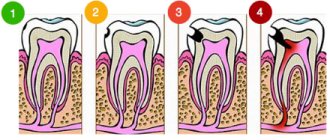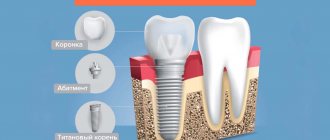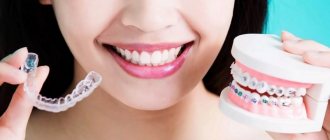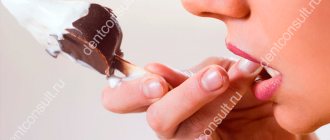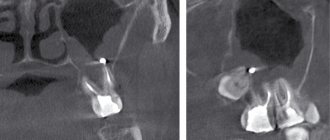The result of dental canal treatment is the preservation and restoration of a tooth that is infected or has other pathology. The main task here remains cleaning the root canal. Infection and dying tissue must be removed from it. The resulting cavity is then securely filled. If treatment is not started in time, the inflammatory process will spread further and the tooth will have to be removed.
What is a root canal
In addition to enamel and dentin, any tooth has a fairly large internal cavity. Its main part is called the pulp chamber. Thin tubules extend from it. They are located along the entire length of the roots. These are root canals. The number of roots varies among different groups of teeth. Accordingly, the number of channels is also different. The front teeth have only 1 canal. Side groups can have from 2 to 4.
Dental tubules are narrow tubes with many branches. They originate at the top of the root. This place is called the apical foramen. From here, neurovascular tissue passes to each root. If it is inflamed or dead, it is removed during endodontic treatment. Next, the resulting cavity is cleaned of its residues, disinfected and sealed.
When is endodontic therapy needed?
Strict indications are required for dental canal treatment. After all, if the neurovascular tissue is removed, the tooth loses strength and becomes susceptible to destruction. Therefore, endodontic treatment should be carried out only in cases of inflammatory processes or traumatic injuries. The most common are:
- Pulpitis. This is an inflammation of the neurovascular tissue (pulp). It is a soft, fibrous substance. In addition to blood vessels and nerve endings, it includes connective tissue and lymphatic vessels.
- Periodontitis. Inflammatory process in the root and adjacent tissues.
These diseases have the following symptoms:
- Swelling of the gums and changes in its color, the appearance of fistulas and purulent formations on it.
- Acute pain in the tooth that is aching or throbbing. It gets worse at night or with pressure.
- Putrid odor from the mouth.
Sometimes these symptoms may be absent. In such cases, inflammation is determined only upon examination. Only a specialist can make a conclusion about the need for endodontic treatment. He selects the most effective treatment regimen depending on the situation.
When not to use local anesthesia
Anesthetics injected into the gums should not be used if the patient is allergic to them. They are also prescribed with extreme caution to persons who have diseases of the cardiovascular system, thyroid gland, or diabetes. In all these cases, complex dental interventions are carried out strictly in a hospital setting.
Before administering an anesthetic, the patient must tell the doctor what acute or chronic diseases he has. This will allow the doctor to make the right decision at the stage of choosing a method of pain prevention.
Old methods of root canal treatment
Previously, endodontic treatment involved removing the pulp. For this purpose, for example, arsenic paste was used. It was inserted into the affected cavity and contributed to the death of the tissue. After this, the doctor removed the pulp from the tooth and filled it. This was the end of the treatment. Another common method was the placement of a resorcinol-formalin mixture. It froze in the cavity, thanks to which it was possible to stop the disintegration of tissues.
These methods had the following major disadvantages:
- Resorcinol-formalin and arsenic mixtures do not always completely kill the nerve. Therefore, when healing tissue, the patient could experience acute pain.
- Arsenic and resorcinol-formalin mixture are very toxic. They can accumulate in different organs.
- After pulp removal, tissue may remain in the root canals. Often they caused re-inflammation.
These methods of endodontic treatment were used due to the lack of adequate anesthesia, under which the affected pulp could be completely removed. Today dentistry has much more gentle methods.
What might be included in the treatment plan?
It depends on the clinical situation. In simple cases, when you only need to cure caries, perform remotherapy or professional hygiene, you don’t need to draw up a separate plan:
- During the examination, the doctor will determine which teeth need to be treated;
- if there are several of them, he will divide them into groups (usually according to the effect of anesthesia - for example, the molars of the lower jaw or the left side of the upper jaw);
- the dentist will discuss the number and schedule of visits with the patient;
- You can calculate the price of treatment in advance to plan your expenses.
In more complex cases where complex treatment is needed, the plan may include the following steps.
Urgent help. It is provided if the patient presents with acute pain, injury, or severe inflammation. Primary treatment is performed immediately after examination and diagnosis.
Therapeutic treatment. It can be carried out as an independent stage or as part of procedures for sanitation of the oral cavity in preparation for subsequent procedures. At this stage, caries is treated, non-carious lesions (erosions, wedge-shaped defects, chips) are eliminated. If existing fillings or restorations are worn or damaged, they are repaired or replaced. Professional hygiene can also be performed (teeth cleaning with ultrasound or using the Air Flow technique to remove tartar). The therapeutic stage includes treatment of gums, diseases of the oral mucosa, and relief of inflammation.
Surgical stage. It is carried out if the patient needs tooth extraction or surgery to restore periodontal tissue. Removal is performed for severely damaged units that are impractical or impossible to restore. If prosthetics with the installation of an implant is performed at the site of the extracted tooth, it is recommended to additionally use the APRF technology during extraction (formation of a fibrin clot in a centrifuge and its use for rapid wound healing).
Orthodontic treatment. It can be performed using braces, mouthguards, veneers or auxiliary orthodontic structures. Usually it is planned separately, simulating a gradual correction of the bite, scheduling a visit to the orthodontist to replace the mouth guard or adjust the arc of the brace system. In DentoSpas dentistry, such a plan additionally includes preventive examinations, which are combined with professional hygiene. While the patient is wearing braces, professional cleanings are performed to ensure effective cavity prevention. In addition to the main stages, the orthodontic treatment plan includes a retention period during which the patient wears a retainer. This is a device that consolidates the results of bite correction.
Orthopedic treatment. It may include implantation, prosthetics (installation of crowns, inlays, fixed, conditionally removable or removable dentures). Like occlusion correction, orthopedic treatment is planned separately, scheduling visits to the implantologist and determining the timing of production of prostheses and implants. In simple cases, for example, when it comes to installing a crown or a removable denture, all operations are performed in 2-3 visits to the doctor. During implantation, the course can last several months or longer.
Preventive action plan. Separately, the doctor can prescribe preventive visits, examinations, procedures (for example, professional hygiene or remotherapy). This is convenient if it is difficult for the patient to independently plan visits to the dentist.
Other events. This may be observation by specialized specialists (for example, if dental problems arise due to endocrine disorders or stomach problems), additional examination or mandatory tests (needed before implantation or other surgical interventions).
Modern methods of endodontic treatment
In the treatment of tooth canals today there are two approaches: therapeutic and surgical. Let's look at them in more detail:
Therapeutic treatment. With this method, it is possible to preserve the entire pulp or at least part. The drug is placed into the cavity. The pulp chamber is isolated using a special gasket, then the tooth is filled. The drug can also reach tissues through dentin. To do this, special bandages with antibiotics are applied to the tooth. This therapy is used only in the initial stages of the inflammatory process.
Surgery. In this case, the pulp is completely removed, the canals are cleaned, disinfected and sealed. There are the following methods for filling cavities:
- Classical. The canals are filled with conventional filling material.
- Vertical filling. A special filling composition is administered as an injection.
- The use of thermophiles. A special heated composition on a carrier is placed into the cavity.
Sometimes, in order to cure the canal, you have to remove the tip of the root. This measure is necessary for cysts, granulomas, perforations, fibroids and other problems.
Saliva as protection against caries
You need to know that saliva protects us from bacteria. But only from a certain part of them. In addition, this takes about half an hour until the saliva neutralizes all harmful bacteria. Consequently, caries causes the most destructive effect on us during the first 20-40 minutes after eating, it all depends on the amount of sugar. Here's some advice: never eat sweets before bed without brushing your teeth afterward. We also note that when chewing chewing gum, a lot of saliva is released, therefore, chewing it after eating is good for your teeth.
Stages of endodontic treatment
- Diagnostics. If there is a suspicion of problems in the dental canal, an x-ray is taken. The specialist can also study the images that the patient already has. Depending on the diagnostic indications, treatment is selected.
- Pulp removal. First, the dentist anesthetizes the tooth. Then he opens it and removes all damaged tissue. Next, the cavity is given a convenient shape. Then the channels are disinfected using a special solution.
- Root canal filling. The cavities are filled with special materials. They are divided into hard (pins), hardening (various cements) and plastic (paste or gutta-percha). The most modern are the latter.
- Tooth restoration. This is the restoration of the shape of a tooth using a filling, crown or inlay.
Latest materials
ICON technology
Most of all, the latest materials are in demand, of course, in prosthetics. However, today they play a huge role in dental treatment (in particular, in fillings). Innovative composite materials are used when placing fillings. The use of many of them allows you to simultaneously replace drilling a tooth with a drill and fill voids in damaged tooth tissue. Often, the use of such techniques allows you to perform all the necessary manipulations for the treatment of caries in one visit.
A popular method of such treatment is Icon or liquid filling. Its essence lies in the fact that the light-composite material is applied to a specially prepared diseased tooth and penetrates into its structure. The procedure is repeated 2 times. Hardening of the substance that has impregnated the tooth tissue occurs under the influence of light. This way the affected area is sealed. At the end of the procedure, the tooth is polished, and the filling site becomes indistinguishable on its surface.
A similar technology is used when installing a photo seal. A composite material is also used here, which, under the influence of ultraviolet light, hardens inside the tooth and can take the desired shape. The method is also widely used to restore lost areas of teeth and chips on fillings, as it is durable and allows you to build up any desired volumes layer by layer.
Canal treatment using a microscope
The diameter of the root canal of a tooth is approximately 1 millimeter. In such conditions it is impossible to work with it without special optics. The dental microscope allows you to increase visibility up to 32 times. Therefore, it is increasingly used in modern dentistry.
Advantages of using a dental microscope:
- The specialist can see and remove only tissues affected by inflammation, without touching healthy ones.
- An excellent overview of the tubule orifices is achieved. Seeing the number of their branches, depth and directions is very important during endodontic treatment.
- Due to targeted treatment of the pulp, complications can be avoided. The possibility of perforations is also eliminated.
Who is an endodontist and what does he do?
This specialist treats root canals and cysts neurosurgically, using an operating microscope. This equipment makes it possible to diagnose the condition of the canals and carry out treatment, while ensuring extreme accuracy.
A dentist-endodontist (or endodontist) is a rather narrow specialization, so a dentist-therapist has the right to perform his functions. But for this he must have the necessary qualifications. Compliance with this requirement is of great importance, since the endodontist must be able to carry out various manipulations with the pulp and root canals. Also, this specialist must have an impressive theoretical base and be extremely attentive. Any mistake during the procedure can lead to tissue infection and tooth loss.
Good to know. To become a specialist in endodontics, you must obtain an additional three-year education at a medical university.
Recommendations after endodontic treatment
After stopping the inflammation of the pulp, it is necessary to consolidate the result. To do this, the patient must adhere to the following simple rules:
- Do not eat spicy, cold or hot food for several days. You need to wait until the treated teeth lose sensitivity.
- Maintain oral hygiene. You need to brush your teeth and floss twice a day.
- Eliminate solid foods from your diet for a while. Failure to comply with this rule can lead to tooth decay.
- Go to the dentist for dental checkups 2 times a year.
After endodontic treatment, teeth will become especially sensitive. This is how the body reacts to the filling material. However, after a few days this effect will disappear.
Why do teeth fall out?
But this is only part of the danger of dental plaque. If plaque remains after brushing your teeth, it will harden over time. This plaque is called tartar. As a result, the tooth will begin to become inflamed, and a small space will form between the tooth and gum in which food will accumulate. The dentist can save you from such inflammation. But if you don’t turn to it in a timely manner, then you should know that this leaves people without teeth much more often than from ordinary diseases.
Cost of services
Treatment of dental canals Price
Treatment of dental canals from 3000 rub.
1-canal tooth (mechanical and medicinal treatment of the canal) 900 rub.
1-canal tooth (canal filling with gutta-percha pins) 750 rub.
2-canal tooth (mechanical and medicinal treatment of canals) RUB 1,500.
2-canal tooth (canal filling with gutta-percha pins) 980 rub.
3-canal tooth (mechanical and medicinal treatment of canals) RUB 2,100.
3-channel tooth (canal filling with gutta-percha pins) RUB 1,300.
Expert of the article you are reading:
Akhmedkhanov Said Rashidovich
Dental surgeon, general dentist, implantologist, orthopedic dentist, dental therapist.
You may also be interested in:
Dental treatment during pregnancy Dental consultation Treatment of dental cysts Increased sensitivity of teeth: causes and methods of treatment Filling of dental canals Treatment of pulpitis Treatment of fistula on the gums Treatment of flux (periostitis)
Show more
Treatment of caries: photo
Treatment of dental caries using a specific example.
All main stages of caries treatment are shown in Fig. 15-23. Explanations for each photo appear when you click on it. Dental filling: photo
In this article, we tried to answer questions from people interested in caries treatment, such as: how to treat caries, how to remove caries, how to cure caries. We hope that you found this article at least somewhat useful. Read about the average cost of treatment for different types of caries in the article: “Cost of treatment.”
Sources:
1. Higher prof. the author’s education in therapeutic dentistry, 2. Based on personal experience as a dentist, 3. National Library of Medicine (USA), 4. “Therapeutic dentistry: Textbook” (Borovsky E.), 5. “Practical therapeutic dentistry” (Nikolaev A.).
